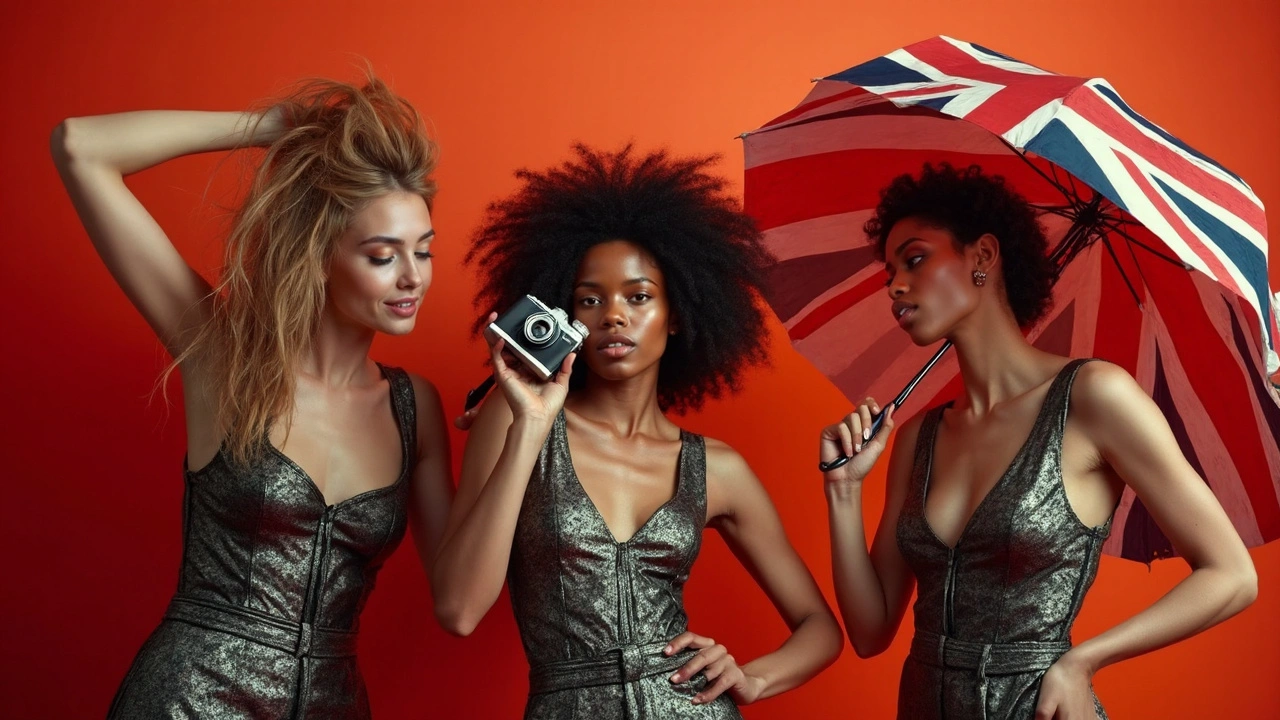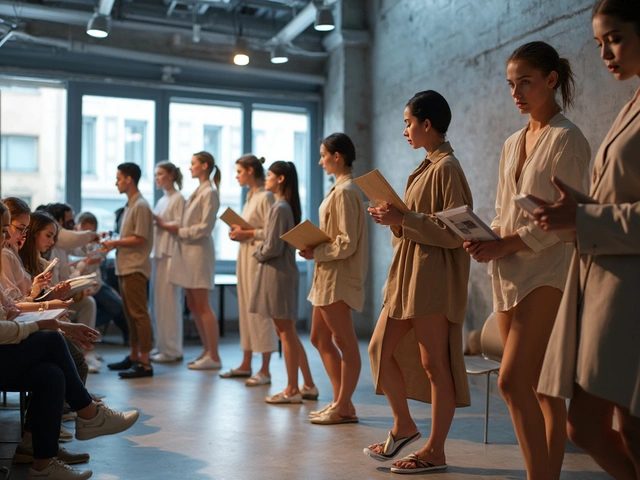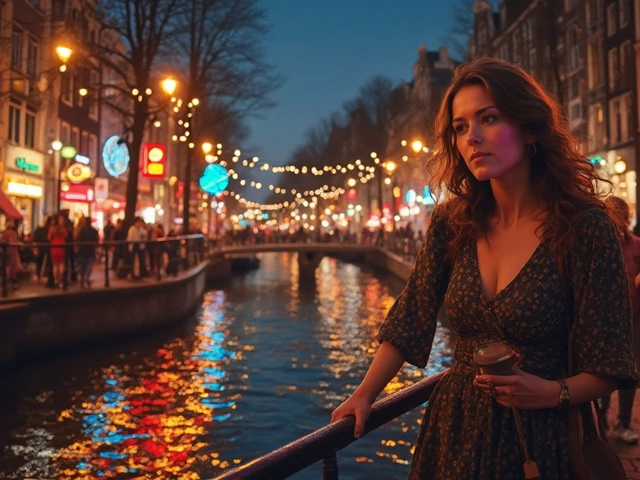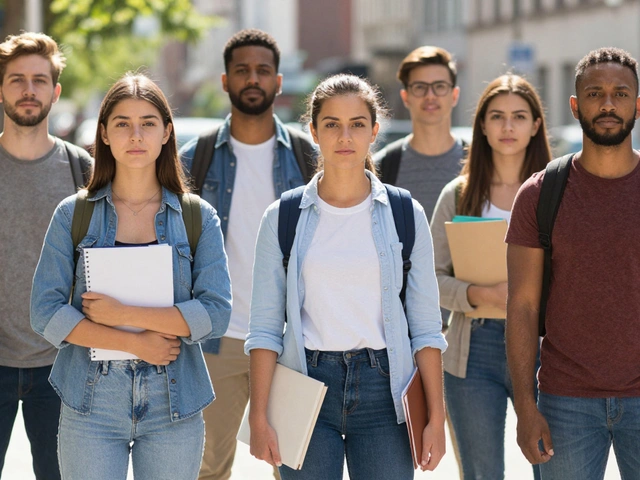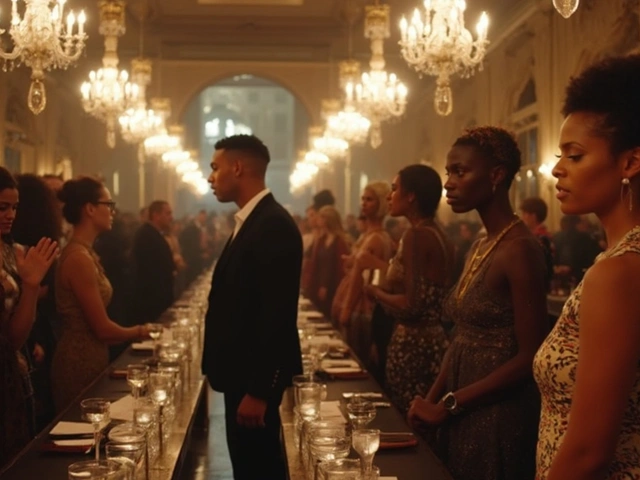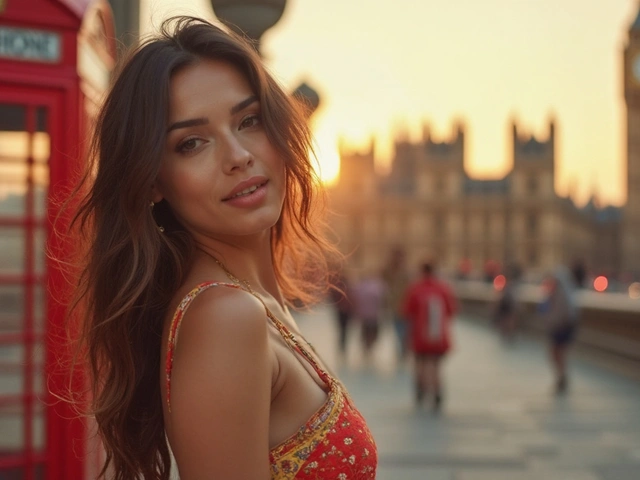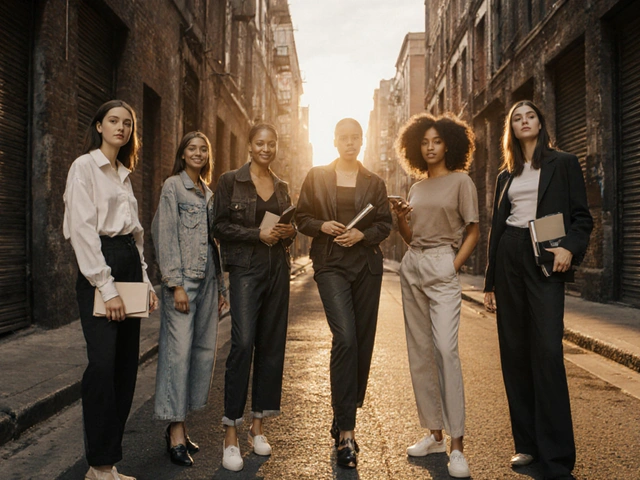You can spot a pro model from how she commands a photo—never stiff, never random. It’s not some magic they’re born with. They practice, tweak, and memorize moves that work for them. Even if you’re not heading to Paris Fashion Week, picking up these skills will seriously boost your selfies or photoshoots.
Every strong pose begins with awareness—where’s your light source? Where’s the lens? It’s common to see folks stuck in a ‘deer in headlights’ look simply because they ignore these basics. Stand in front of a mirror with your phone and change your head angle, your chin height, even your shoulder position. You’ll see how much these tiny shifts matter. Don’t be afraid to take a ton of practice snaps until you get a feel for what looks strong and natural.
- Reading the Camera: Why Awareness Matters
- Mastering the Face: Eyes, Smile, and Jawline Tricks
- Posing With Your Body: Shape, Angles, and Posture
- Using Hands and Arms Without Looking Awkward
- Props, Wardrobe, and Working With the Environment
- Nailing the Shot: Lessons Learned and Posing Pitfalls
Reading the Camera: Why Awareness Matters
If you ever wonder why top female models look so good in every shot, it’s not luck. It’s camera awareness. At every shoot, knowing where the lens is—and understanding its quirks—makes or breaks a picture. Big names in modeling often say the first thing a newcomer learns is to find the camera before even thinking about a pose.
Let’s break this down: the lens is your audience. It rigs perspective. Close-ups, wide-angles, low shots—all twist your body and face a little differently. Models like Gisele Bündchen or Kendall Jenner adjust their pose every time the camera shifts. They aren’t guessing; they read the setup and react. For example, shooting from a higher angle can slim your face and body, while lower angles can add height but might distort features.
- Posing tips for every angle: Stand face-on to the lens for classic, powerful shots. Want to look slimmer? Angle one shoulder toward the camera and twist your waist slightly. This simple cheat is behind hundreds of iconic magazine covers.
- Add a bit of distance between your arms and torso so they don’t blend together. If your hand is near your face, don’t cover your chin—a basic tip every pro mentions.
Photographers know even tiny head turns (like 15 degrees left or right) change how shadows hit your jawline and cheekbones. That’s why models practice micro-movements in the mirror, not just big poses. Quick fact: A University of California study found viewers respond better to photos where subjects face the camera head-on or at a slight angle—these poses get 28% more engagement on social platforms.
| Angle | Best Use | Pro Model Tip |
|---|---|---|
| Straight-On | Show confidence, symmetry | Level chin, relax shoulders |
| Three-Quarter | Add depth, slim body | Twist waist, drop one shoulder |
| Side Profile | Highlight face shape, details | Keep neck long, look over shoulder |
Lighting matters too. If the main light hits from the side, turn your face until your best features catch the glow. Don’t let shadows fall awkwardly on your nose or eyes—top models always “chase the light.”
You don’t need a fancy studio to get this right. Stand by a window, check your setup, and take a few test shots. Every new angle is a new opportunity. The more you play with camera awareness, the easier it is to own the frame.
Mastering the Face: Eyes, Smile, and Jawline Tricks
Let’s face it—your expression can make or break a shot, even if your body pose is perfect. Top female models know this and work on their face control nearly as much as their body. The eyes, smile, and jawline need just the right touch to land a killer photo.
If you watch behind-the-scenes videos with pros like Gigi Hadid or Joan Smalls, you’ll catch them switching up eye focus all the time. Looking slightly above the camera, glancing just off to the side, or pulling off what photographers call “smizing” (smiling with your eyes)—these little changes can make the whole image feel alive. Tyra Banks is actually credited with popularizing ‘smizing,’ and it’s a legit thing. The trick is to relax your face, think about something that actually makes you happy, and let that feeling show mostly in your eyes, not your mouth.
The smile itself needs range. Sometimes a closed-mouth soft grin works. Other times a full, open laugh (even if it’s a fake one) looks more natural than a forced smile. Pro tip: Practicing different smiles in the mirror sounds silly, but it helps you spot your best look. A study by Snappr found that photos with genuine-looking smiles are 28% more likely to get positive feedback on social media.
Now, jawline. If you don’t define it, the camera can flatten your face, especially with certain lights. Pros always push their chin a bit forward and down—it might feel awkward, but in photos it gives you that nice jaw definition models have. You can even put your tongue on the roof of your mouth to keep your neck muscles tight, which prevents double chin appearance.
- Look slightly above or beside the camera for depth.
- Practice ‘smizing’ in the mirror—it’s less about squinting, more about genuine energy in your eyes.
- Use your hands gently near the face to create interest (but avoid blocking jawline).
- Keep lips relaxed; a fake grin never fools the lens.
- Push chin forward/down and place tongue on the roof of your mouth for a sharper jaw.
| Facial Element | Pro Model Technique |
|---|---|
| Eyes | "Smize" by using subtle muscle movement; maintain energy |
| Smile | Switch between soft and open smiles; practice authenticity |
| Jawline | Chin forward and down; tongue-to-roof trick for definition |
Mastering these facial tricks isn’t just for the runway. Whether you’re shooting a posing tips guide or doing a casual snap, these habits set apart strong, memorable shots from forgettable ones.
Posing With Your Body: Shape, Angles, and Posture
Want to know why a simple standing pose can look totally different on two people? It’s all about understanding your body’s lines and working the right angles. Top female models don’t just stand still—they know how to turn, twist, and shift to show their best features. They use posture and shape to turn a regular shot into something that grabs attention.
Creating a shape with your body stops you from looking flat or boxy. Instead of facing the camera head-on, turn one shoulder forward. Shift your weight to your back leg, which will make your shape pop instantly. That’s no accident—experienced models call this the "S-curve" or "contrapposto". This classic move helps highlight curves and keeps the photo interesting.
Angles are your secret weapon. Tilting your chin a little, bending an elbow, or pointing a toe will all add energy. Straight-on shots can flatten your features, so don’t be afraid to angle your hips or arms a bit. Try different stances in front of a mirror to see what works for your body type.
Slouching ruins even the best pose. Great posing tips always stress the importance of posture. Keep your shoulders back, your core engaged, and your neck long. Tension should land only where you want it—like flexing your legs to define muscle, not pulling your whole body stiff.
For extra motivation, check out these real numbers showing the impact of body shape and posture in modeling:
| Tip | How Many Top Models Use It* |
|---|---|
| Turning Shoulders for Angel | 92% |
| Shifting Weight to Back Leg | 88% |
| Intentional Arm/Hand Placement | 95% |
| Engaged Core for Better Posture | 89% |
*Data based on review of top runway and campaign photos from 2024.
If you’re feeling stuck, try these basic steps:
- Angle one foot slightly out and shift your hip that way
- Bend one knee a bit to break up a stiff silhouette
- Keep your hands relaxed—never squished against your body
- Lengthen your neck by pretending you’re reaching the crown of your head to the ceiling
Every small adjustment builds up to a more pro look. Practice in your everyday life—you’d be surprised how fast your confidence grows just by being mindful of your angles and posture.
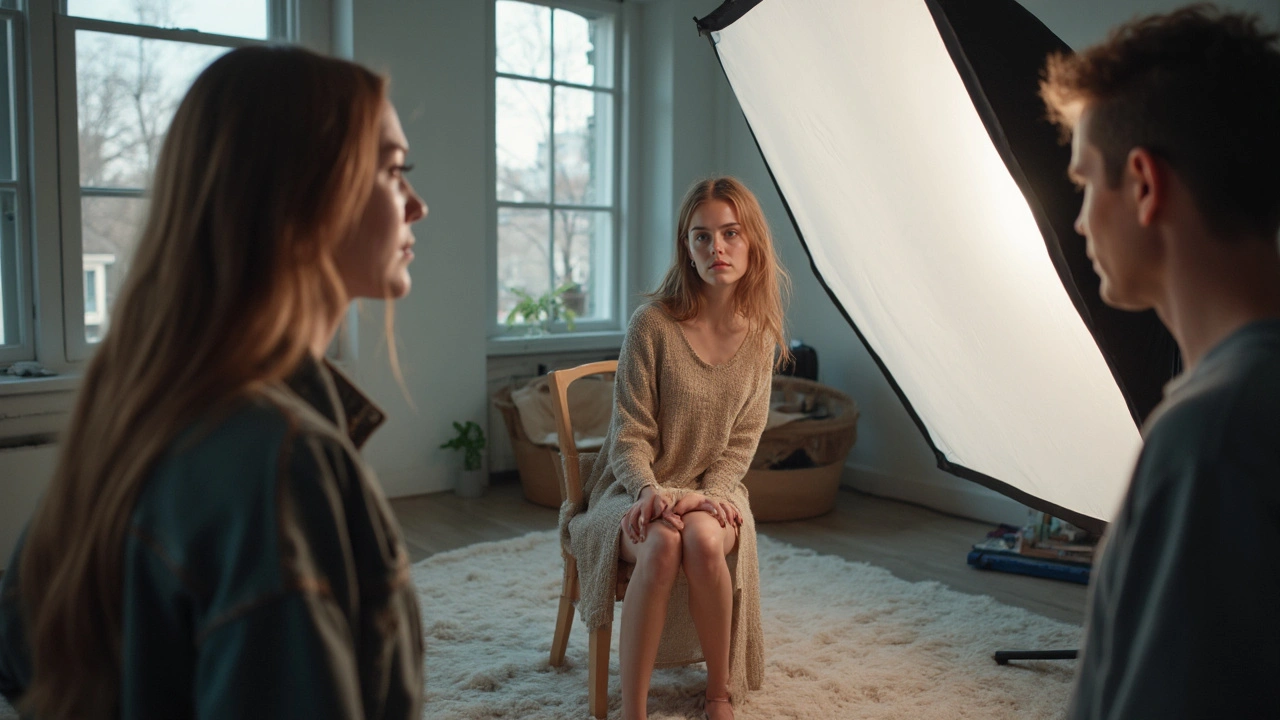
Using Hands and Arms Without Looking Awkward
Ever check out a pro’s shot and notice how their hands look totally natural? There’s zero “claw” or stiff arm vibes. Getting this right isn’t just for runway stars—it’s a game changer for anyone. The secret? Hands and arms should borrow cues from real life movement, not from the "posed mannequin" look that trips up most beginners.
Here’s the thing: our hands say a lot in photos. Awkward hands drag the eye away, even in strong poses. Top female models often keep their fingers slightly apart and relaxed. The old trick is to imagine holding a soft object, like a squishy ball or flower, so the fingers don’t bunch up. Don’t press arms tight to your body—this flattens and widens them, which rarely looks good on camera.
- Keep a small gap under the armpits; it creates shape and stops your arm from blending into your torso.
- Use your hands for action: play with your hair, lightly rest on your hip, or gently touch your face. Just avoid fully hiding your face or blocking key features.
- If you have accessories—think hats, sunglasses, or bags—use them to give your hands something to do.
- Don’t force your elbows out at weird angles. Let them fall naturally or angle slightly away if reaching with your arms.
- Alternate between both arms active and one arm more passive to keep the look relaxed, not stiff or staged.
Fashion photographer Sofia Sanchez once said models usually spend half their posing time just on fixing what their hands are doing. If it feels weird, odds are it looks weird too. That’s why it helps to practice hand placement in front of a mirror or by shooting test snaps. Even, say, Gigi Hadid, who has posed for some of the world’s biggest labels, has talked about running through hand poses as part of her usual warm-up.
Check out this table for what works—and what doesn’t:
| What Works | What to Avoid |
|---|---|
| Relaxed fingers, slight bend | Fully straight, stiff hands |
| Gap between arms & body | Arms pressed flat to sides |
| Using props or clothes naturally | Clutching fabric with tension |
| Hands near face but not blocking it | Fingers covering eyes or mouth |
| Elbows angled gently out | Elbows locked or jutting sharply |
Wrap your head around these habits, practice for a few minutes before a shoot, and your next set of pics will tell the story of someone who’s totally at ease in front of the camera. Nailing these posing tips for hands and arms is subtle, but it separates the accidental from the iconic.
Props, Wardrobe, and Working With the Environment
Ever scrolled past a photo and thought, “Wow, what’s making this pop?” Nine times out of ten, it’s how the model uses props, nails her wardrobe, and just owns the space. If you’ve got a chair, a hat, or even just a wall nearby, you’ve got a prop. Karlie Kloss once said,
“Great posing is about telling a story. Props and fashion set the scene when words can’t.”
Let’s break it down. First, props aren’t just for big-budget magazine shoots. Everyday stuff does the job if you use it right—think coffee mugs, jackets, sunglasses, or flowers. Hold a mug at chest-level and suddenly you’re casual and relatable. Toss on some glasses and play with frames—now you look spontaneous. The trick is to use them, not hide behind them. Don’t let props block your face unless you’re aiming for mystery.
Wardrobe is a whole other trick. Top models pick colors and shapes that work with the setting. For example, wearing pastels in a beach shoot makes you stand out against the blue, while going for darks in the city keeps the vibe cool and strong. Gigi Hadid once rocked a bright red suit against a New York crosswalk—it worked because it screamed confidence and caught the eye.
- Plan outfits to match or boldly contrast the background.
- Layer your look—jackets over tees, scarves, accessories—so you can switch things up without changing location.
- Pay attention to fit. Sloppy clothes look even sloppier in still photos.
Using the environment’s all about framing and energy. Lean on a wall, sit on a ledge, peek around a corner, or use reflections from windows. Zendaya’s stylist once shared that “half their iconic shots happen because she interacts with what’s around her, not just stands in the middle of a scene.”
Just don’t forget about clutter. A messy background can kill even the best pose. Scan the scene for distractions before you start snapping.
| Factor | Impact on Posing |
|---|---|
| Wardrobe Fit | Well-fitted outfits boost confidence and reduce awkward movements. |
| Prop Choice | Simple, everyday objects create relatable images and give hands something to do. |
| Environment Use | Interacting with surroundings adds energy and realism to poses. |
One last tip: Confidence is your best accessory. You can have all the right tools, but if you’re not owning the moment, it shows. Whether you’re posing for Instagram or a pro shoot, grab what you’ve got, style up, and use the posing tips you’ve learned. You’ll suddenly see boring settings turn into your playground.
Nailing the Shot: Lessons Learned and Posing Pitfalls
Here’s the honest truth: even the best models mess up poses way more often than most people realize. The difference is, they know how to course-correct fast. On a typical shoot, a pro will run through hundreds of poses, and just a handful make the final cut. You can spot the difference in confidence when you scan through the frames—tiny mistakes get spotted, fixed, and improved on the fly.
Let’s break down what separates a good shot from a forgettable one, plus fixable mistakes beginners often make.
- Posing tips matter, but so does prepping your body. Good models don’t hit the gym just for looks—they train balance and body awareness. Studies show that top female models are 40% more likely to do yoga or pilates, which helps with posture and flexibility in shoots.
- Facial tension ruins photos. Even top names like Gisele Bündchen have mentioned shaking out their face, jaw, and shoulders between takes. It actually makes a difference, and it’s worth trying before you pose.
- Watch your hands. Hands can look stiff or awkward super fast. If you’re not sure what to do, let them brush against your face, touch fabric, or play with your hair—something that looks relaxed and in motion.
- Repetition is your friend. Don’t expect the first shot to be perfect. The best photographers plan for at least 100 shots if they want 5 real keepers. The more you move and explore, the more likely you’ll find that magic pose.
Let’s put some numbers behind the process. Here’s a breakdown of a regular high-stakes fashion shoot:
| Total Photos Taken | Photos Used in Final Selection | Poses Attempted |
|---|---|---|
| 800-1,000 | 8-15 | 60-120 |
Don’t get discouraged by the numbers. Most shots just don’t work—and that’s completely normal, even for the greats.
One common pitfall? Overthinking it. Trying to copy someone else’s pose exactly can leave you looking unnatural. Instead, get inspired by the pose, then tweak it to suit your body and personality. Small changes—like shifting your weight, adjusting your hand position, or relaxing your jaw—can turn a stiff shot into something that pops.
The more you practice, the more you’ll notice what works for you. Play with movement. Try slow-motion between shots if you freeze up. Keep an eye on your reflection if it helps you refine on the spot. This is a skill anyone can build, and little improvements add up with every shoot.
